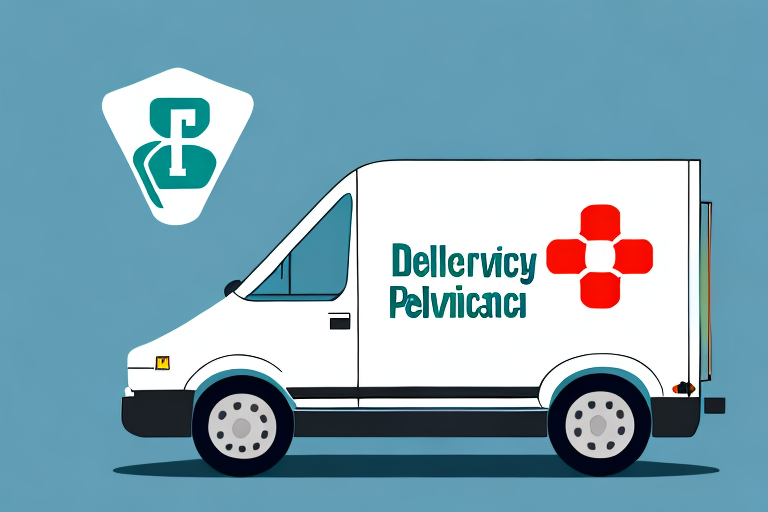Identifying and Understanding Your Target Market
Before launching a pharmacy delivery service, it is crucial to identify and understand your target market. Understanding your potential customers' demographics, behaviors, and needs will enable you to tailor your services effectively.
Demographics of Potential Customers
- Elderly Population: Seniors often require regular medication and may face mobility challenges, making delivery services essential.
- Busy Professionals: Individuals with hectic schedules may prefer the convenience of having their prescriptions delivered.
- Individuals with Chronic Illnesses: Patients requiring consistent medication management benefit significantly from reliable delivery services.
- Rural Residents: People living in remote areas with limited access to pharmacies are prime candidates for delivery services.
Geographic Considerations
Assessing the geographic location of your target market helps in planning efficient delivery routes and understanding specific local needs. Urban areas may require quick delivery times due to higher population density, while rural areas might prioritize coverage breadth.
Conducting Market Research and Competitive Analysis
Thorough market research is essential to understand the demand, identify competitors, and uncover opportunities within the pharmacy delivery industry.
Methods of Market Research
- Surveys and Questionnaires: Collect data directly from potential customers about their needs and preferences.
- Focus Groups: Engage with small groups to gain deeper insights into customer expectations.
- Interviews: Conduct one-on-one discussions with stakeholders, including pharmacists and healthcare providers.
Competitive Analysis
Analyze existing pharmacy delivery services to identify their strengths and weaknesses. Understanding competitors' pricing strategies, service offerings, and customer reviews can help you differentiate your service. Utilize tools like Statista for industry statistics and trends.
Developing a Comprehensive Business Plan
A well-structured business plan serves as a roadmap for your pharmacy delivery service, outlining your strategies, goals, and financial projections.
Key Components of a Business Plan
- Executive Summary: Overview of your business concept and objectives.
- Market Analysis: Insights from your market research and competitive analysis.
- Service Offerings: Detailed description of the delivery services you will provide.
- Marketing Strategy: Plans for attracting and retaining customers.
- Financial Projections: Revenue forecasts, budgeting, and funding requirements.
Legal and Regulatory Compliance
Your business plan should include strategies to comply with all relevant laws and regulations related to pharmaceutical delivery. Refer to the U.S. Food and Drug Administration (FDA) for guidelines on medication handling and delivery standards.
Legal, Licensing, and Regulatory Requirements
Operating a pharmacy delivery service involves adhering to various legal and regulatory requirements to ensure the safe and lawful distribution of medications.
Business Registration
Register your business with the appropriate state and local authorities. This includes obtaining a business license and registering for taxes.
Pharmacy Permits and Licenses
You must acquire specific permits to handle and deliver medications. Consult your state’s pharmacy board for detailed licensing requirements.
Compliance with Health Regulations
Ensure your operations comply with health regulations, including Health and Human Services (HHS) guidelines on medication storage and transportation.
Insurance Requirements
Secure liability insurance to protect your business against potential claims related to medication delivery errors or accidents involving delivery vehicles.
Securing Funding and Financial Management
Obtaining adequate funding is vital for covering startup costs and sustaining business operations. Effective financial management ensures long-term profitability and growth.
Funding Options
- Bank Loans: Traditional loans from financial institutions with structured repayment plans.
- Grants: Explore government and private grants designed for healthcare services.
- Angel Investors: Seek investment from individuals interested in supporting innovative healthcare solutions.
- Crowdfunding: Use platforms like Kickstarter or Indiegogo to raise funds from the public.
Financial Planning
Create detailed financial projections, including startup costs, operating expenses, and revenue forecasts. Tools like SBA’s Business Plan Tool can assist in developing realistic financial plans.
Managing Cash Flow
Implement effective cash flow management practices to ensure you can cover ongoing expenses and invest in growth opportunities.
Building Partnerships and Establishing Operations
Forging strong partnerships with local pharmacies and setting up efficient operations are critical to the success of your delivery service.
Establishing Relationships with Pharmacies
Collaborate with local pharmacies to secure a steady supply of medications. Offer mutually beneficial agreements that enhance their service offerings while expanding your delivery network.
Setting Up Your Delivery Infrastructure
- Delivery Vehicles: Invest in reliable vehicles equipped to handle medication safely.
- Technology Solutions: Utilize GPS tracking, route optimization software, and mobile apps to streamline delivery operations.
- Hiring and Training Drivers: Recruit experienced drivers and provide training on handling medications and customer service.
Operational Efficiency
Develop standard operating procedures (SOPs) to ensure consistency and reliability in your delivery services. This includes protocols for order processing, medication handling, and customer communication.
Marketing Strategies and Customer Acquisition
Effective marketing strategies are essential for attracting and retaining customers in the competitive pharmacy delivery market.
Digital Marketing
- Website Optimization: Ensure your website is user-friendly, mobile-responsive, and optimized for search engines.
- Social Media Marketing: Leverage platforms like Facebook, Instagram, and LinkedIn to promote your services and engage with customers.
- Email Campaigns: Use targeted email marketing to reach potential customers with personalized offers and updates.
Local Marketing
- Print Media: Distribute flyers and brochures in community centers, clinics, and pharmacies.
- Community Events: Participate in local health fairs and community events to increase visibility.
- Referral Programs: Implement referral incentives to encourage existing customers to refer new clients.
Customer Retention Strategies
Offer loyalty programs and exceptional customer service to retain existing customers. Personalized communication and timely deliveries can enhance customer satisfaction and loyalty.
Measuring Success and Performance
Regularly evaluating your pharmacy delivery service’s performance helps in identifying strengths, addressing weaknesses, and making informed business decisions.
Key Performance Indicators (KPIs)
- Customer Satisfaction: Use surveys and feedback forms to gauge customer satisfaction levels.
- Delivery Time: Monitor average delivery times to ensure prompt service.
- Revenue Growth: Track revenue trends to assess financial health and growth.
- Order Accuracy: Measure the accuracy of orders delivered to minimize errors.
Utilizing Analytics Tools
Employ analytics tools like Google Analytics to monitor website traffic, customer behavior, and marketing campaign effectiveness. Data-driven insights enable you to refine strategies and improve service quality.
Continuous Improvement
Act on the insights gained from performance metrics to enhance your service offerings. Regularly update your processes, technology, and customer engagement strategies to stay competitive.
Overcoming Challenges and Exploring Future Opportunities
The pharmacy delivery service industry presents both challenges and opportunities. Addressing potential obstacles proactively and capitalizing on emerging trends can drive your business’s success.
Common Challenges
- Regulatory Compliance: Navigating complex healthcare regulations requires ongoing attention and adaptation.
- Competition: Differentiating your service in a crowded market is essential for attracting customers.
- Operational Logistics: Managing timely deliveries and maintaining inventory accuracy can be demanding.
- Financial Management: Balancing costs and revenues to ensure profitability requires diligent financial oversight.
Strategies to Overcome Challenges
Develop a robust compliance program, invest in technology to streamline operations, differentiate your services through exceptional customer care, and maintain meticulous financial records to navigate challenges effectively.
Opportunities and Future Trends
The demand for pharmacy delivery services is expected to grow, driven by factors such as an aging population, increased prevalence of chronic diseases, and advancements in telehealth. Embracing technology innovations like automation and artificial intelligence can enhance service efficiency and customer experience.
Industry Insights
According to a IBISWorld report, the pharmacy delivery industry is projected to continue expanding, with an annual growth rate of approximately 7% over the next five years. Staying informed about industry trends and consumer preferences will position your business for sustained growth.
Expert Tips for Success in the Pharmacy Delivery Industry
Insights from successful entrepreneurs can provide valuable guidance for establishing and growing your pharmacy delivery service.
Understand Your Customers
Deeply understanding your target market allows you to tailor services that meet their specific needs, fostering customer loyalty and satisfaction.
Diversify Revenue Streams
Consider offering additional services such as medication synchronization, automatic refills, or health consultations to create multiple revenue streams and enhance your value proposition.
Build a Strong Team
Recruit skilled professionals who are passionate about delivering excellent customer service. A dedicated team can drive operational efficiency and customer satisfaction.
Stay Updated on Industry Trends
Regularly monitor industry developments, technological advancements, and regulatory changes to adapt your business strategies accordingly.
Embrace Innovation
Incorporate the latest technologies, such as mobile apps for ordering and tracking, to improve customer experience and streamline operations. Innovations like automated delivery systems and data analytics can provide a competitive edge.
Conclusion
Launching a pharmacy delivery service requires meticulous planning, thorough market research, and adherence to legal and regulatory standards. By understanding your target market, developing a solid business plan, securing necessary funding, and implementing effective marketing strategies, you can establish a successful and sustainable pharmacy delivery business. Continuously measure your performance, adapt to industry trends, and prioritize customer satisfaction to achieve long-term success.




















